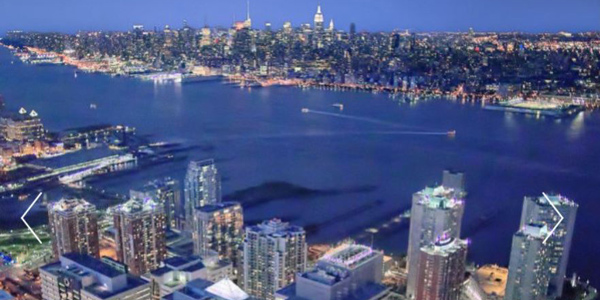By Michael Kuser
FERC on Thursday sidestepped yet another dispute between Public Service Electric and Gas and Consolidated Edison, saying a fight over the fate of their shared transmission lines between New Jersey and New York should be resolved in federal court.
The dispute — over two underwater transmission lines compromised by a pier collapse — is evidence of the continuing bad blood over Con Ed’s April 2017 termination of the “wheel” it used to move power from upstate New York to New York City via northern New Jersey.
In May, PSE&G filed a complaint alleging that Con Ed was violating the NYISO Tariff by failing to cooperate in removing dielectric fluid and the transmission cables from the 345-kV B and C lines after B was damaged by a pier collapse in Jersey City, N.J. The lines were built in 1972 and 1980, respectively, to facilitate the former wheeling arrangement.
Federal Court Suit
In June, Con Ed countered by filing suit in U.S. District Court in New Jersey, accusing PSE&G of violating their interconnection agreement by refusing to put the lines back into service.
In a Sept. 6 order dismissing the complaint, FERC said it did not have exclusive jurisdiction over the dispute and declined to assert primary jurisdiction, leaving the matter for the federal court to decide (EL18-143).
The B Line starts at PSE&G’s Hudson Generating Station in Jersey City and terminates at Con Ed’s Farragut Substation in Brooklyn, while the C Line starts in Brooklyn and terminates at PSE&G’s Marion Substation in Jersey City. The transmission lines are housed inside steel pipes encased in concrete.
A 700-foot section of B was damaged in two pier collapses a decade ago, and in 2016 the New Jersey Department of Environmental Protection informed PSE&G that the two lines could be leaking dielectric fluid, an oil used to regulate the temperature inside the steel pipes. The marina owner was sued to remove tons of debris to allow investigation, which showed B to be leaking a gallon of fluid a day. The C Line was de-energized to facilitate the investigation.
Both utilities reported B repaired in August 2017, and they both agree that neither line is leaking now. The U.S. Coast Guard, however, requires the companies to fix the leakage such that dielectric fluid is not seen on the surface of the Hudson River for 15 consecutive days, a requirement they have yet to meet.
‘Pitting Corrosion’
PSE&G said the leak occurred because of “pitting corrosion” after the pier collapse exposed about 700 feet of the steel pipes to river water. Although the initial leak was fixed with the replacement of a 10-foot portion of steel pipe, PSE&G said additional leaks are likely in the unrepaired pipes.
PSE&G asserted that it has authority to unilaterally drain the fluid and remove the transmission cables from its portion of the lines. Con Ed insists its interconnection agreement with PSE&G prohibits it from unilaterally taking the lines out of service; it wants to reintroduce dielectric fluid and re-energize the lines to conduct a test that the Coast Guard proposed.
State and RTO officials lined up on opposite sides of the dispute, with the New Jersey Board of Public Utilities filing comments supporting PSE&G’s complaint, and NYISO and the New York Public Service Commission filing protests opposing it.
NYISO and the PSC said that as interregional transmission facilities, the lines support grid resilience by providing the ISO and PJM with operational flexibility between their service areas. NYISO said its joint operating agreement with PJM allows use of all the phase angle regulators and transmission lines at their border in an emergency.
NYISO also argued that PSE&G’s underlying reason for seeking to remove the lines is that it wants to replace the lines with transmission facilities that will allow it to have more operational control, increasing their commercial value.
PJM said “there is no reliability criteria violation associated with retiring the [B-C lines], even under peak summer conditions,” and that it does not rely on the lines as a part of its black start plan. The RTO also said, however, that if there are resilience benefits “and it is determined to be advantageous to maintain or replace these tie lines,” the utilities should equitably share the cost.
FERC sided with Con Ed in concluding that the B-C interconnection agreements remain effective through 2020.
The commission said it would not assert primary jurisdiction in the dispute because the issue did not raise a policy issue important to its regulatory responsibilities and that “the unique facts and contractual dispute in this case are not broadly applicable to the commission’s policies on interconnection agreements or reliability requirements.”



